UBC History offers a wide-ranging variety of courses that give students the opportunity to study the past in a way that empowers their future. With fascinating courses that range from the practice of oral history to imperial and colonial archaeology and museums, there’s a History course for you, no matter your interests and endeavours.
Check out the highlight of our 2024/2025 undergraduate course offerings below. Best of luck with course registration!
Please note the course times listed below are only for Lectures. Some courses also have mandatory Discussion sections. Please be sure to sign up for them in Workday Student as applicable.
HIST_V 252: Modern Caribbean History


Agostino Brunias - A Linen Market with a Linen-stall and Vegetable Seller in the West Indies, 1780 Agostino Brunias (1728 - 1796) – Artist (Italian, active in Britain (1758-1770; 1777-1780s)).
Instructor: Alycia Hall (she/her)
Time: Term 1, Tue Thu 2:00 – 3:30 pm
Why did you choose this image to represent the course?
What are you most looking forward to about teaching in this course?
I am looking forward to discussing with students the different ways in which formerly enslaved people expressed their freedom in the Post-emancipation Caribbean.
What can students expect from the course, in terms of workload and the types of readings?
HIST_V 400: The Practice of Oral History
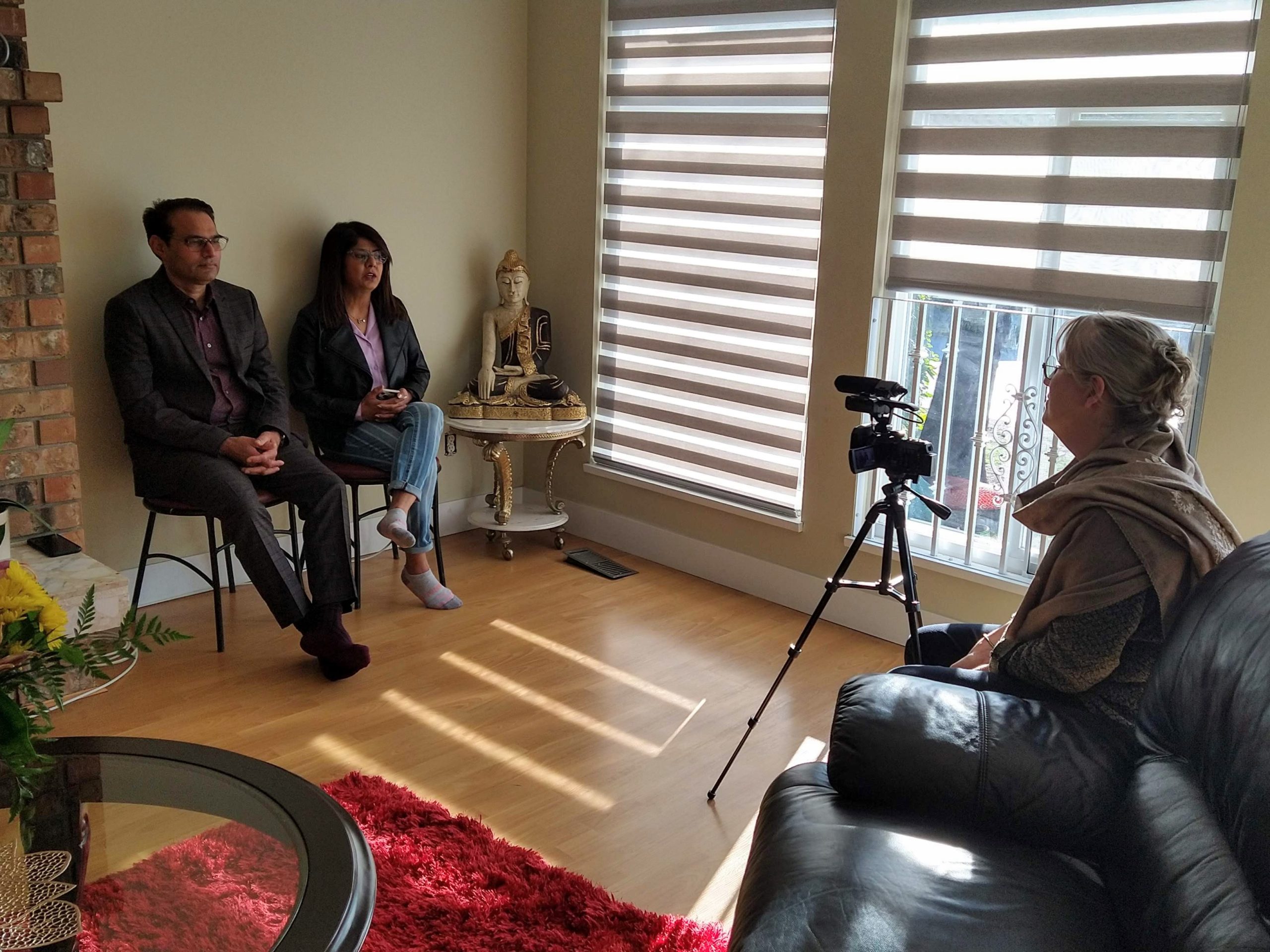

Photography by Jai Birdi, Chetna Association of Canada. Interview with Surjit and Manjit Bains, for the 'Caste in Canada' project, with Professor A. Murphy.
Instructor: Anne Murphy (they/them)
Time: Term 1, Thu 4:00 – 7:00 pm
Why did you choose this image to represent the course?
Oral history is about conversation, and listening. This image gives a sense of that process. It doesn’t show the whole process, which in this case is a years-long collaboration with Chetna Association of Canada, a community organization and with these interviewees. Oral History is therefore also about building and keeping relationships. This class is about all of these things.
What are you most looking forward to about teaching in this course?
I am excited to see what the students will pursue, for their final projects. We run this class as a workshop where we learn from and with each other. I am excited to learn with the students.
What can students expect from the course, in terms of workload and the types of readings?
There are weekly readings for this course, and online responses to the readings. There is one short paper that allows the student to reflect on the oral history process, grounded in the readings for the course. There is also a short paper that accompanies the final project, that also grounds the final project in what we read and understand about the process of oral history. The final project is an oral history interview(s), which explores an aspect of our local histories and communities. Students can work in groups or alone, and will share work over the course of the semester, towards the development of their project.
HIST_V 351: East Central Europe in the 19th and 20th Centuries
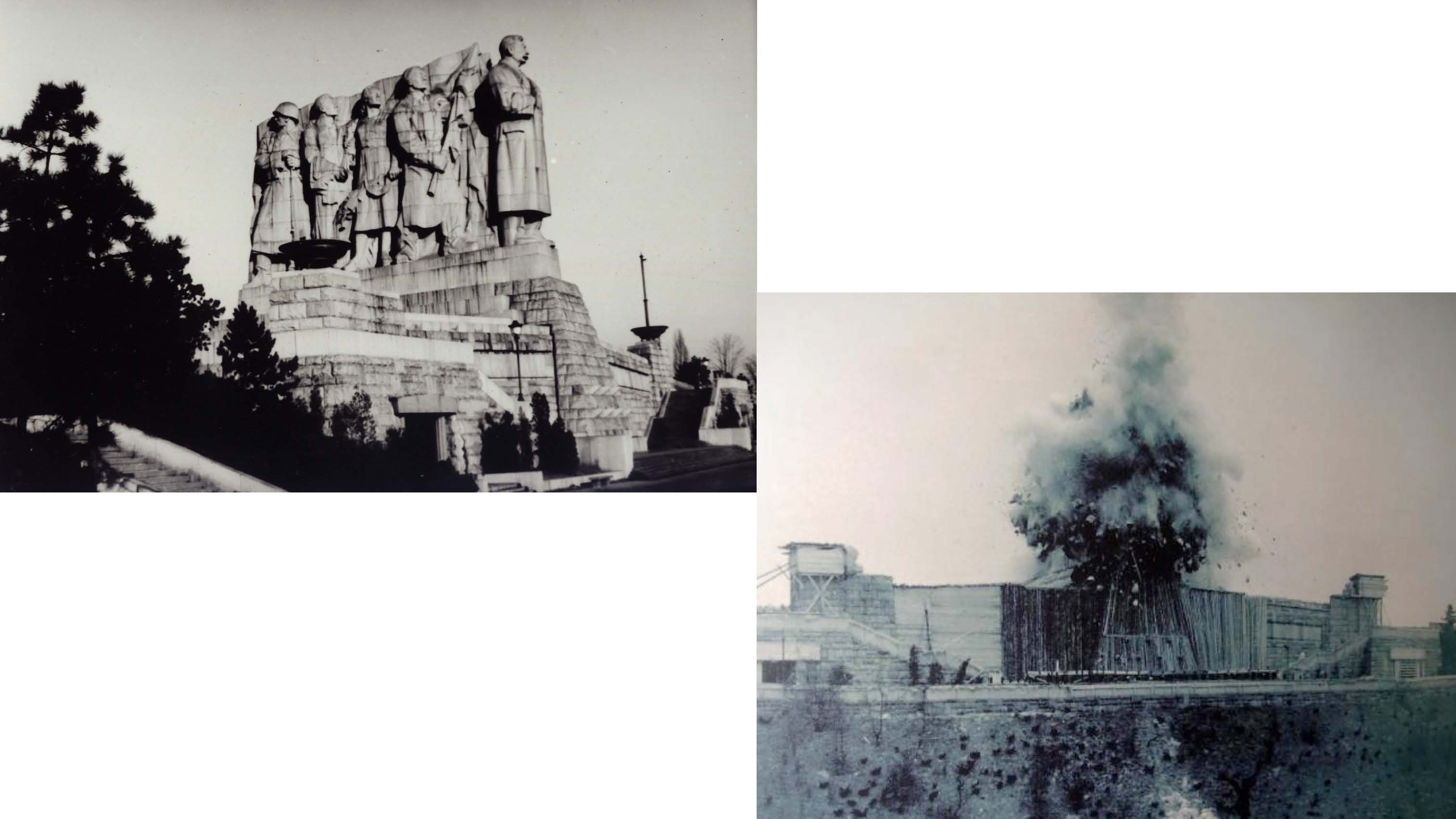

Stalin monument in Prague, built 1955, destroyed 1962. https://de.wikipedia.org/wiki/Stalin-Denkmal_(Prag)
Instructor: Eagle Glassheim (he/him)
Time: Term 1, Tue Thu 11:00 am – 12:30 pm
Why did you choose this image to represent the course?
From the late 19th century to the start of the 21st century, East Central Europe has been an active battleground for some of the most world’s most powerful and destructive ideologies. In a few short years, Czechoslovakia went from a flag-bearer of Stalinism to the Eastern Bloc’s most liberal socialist regime. The rise and fall of Prague’s Stalin monument marked this transition prominently from the Letna overlook above the old city.
What are you most looking forward to about teaching in this course?
East Central Europe has been a kind of testing ground for modernity & critiques of modernity, with lots of drama along the way. The course allows us to test ideas, sample historiography, and experiment with different ways of thinking about and writing history.
What can students expect from the course, in terms of workload and the types of readings?
Reading load is average for a 300-level course; we’ll have lots of discussion; some film; and 3 short essays, using 3 different genres of historical writing. The goal is to think about history and write in ways you wouldn’t find in most other history courses.
HIST_V 271 Japan and Global History, 1550 – 1900 A History of Japan 19th Century to Present Through Images and Objects
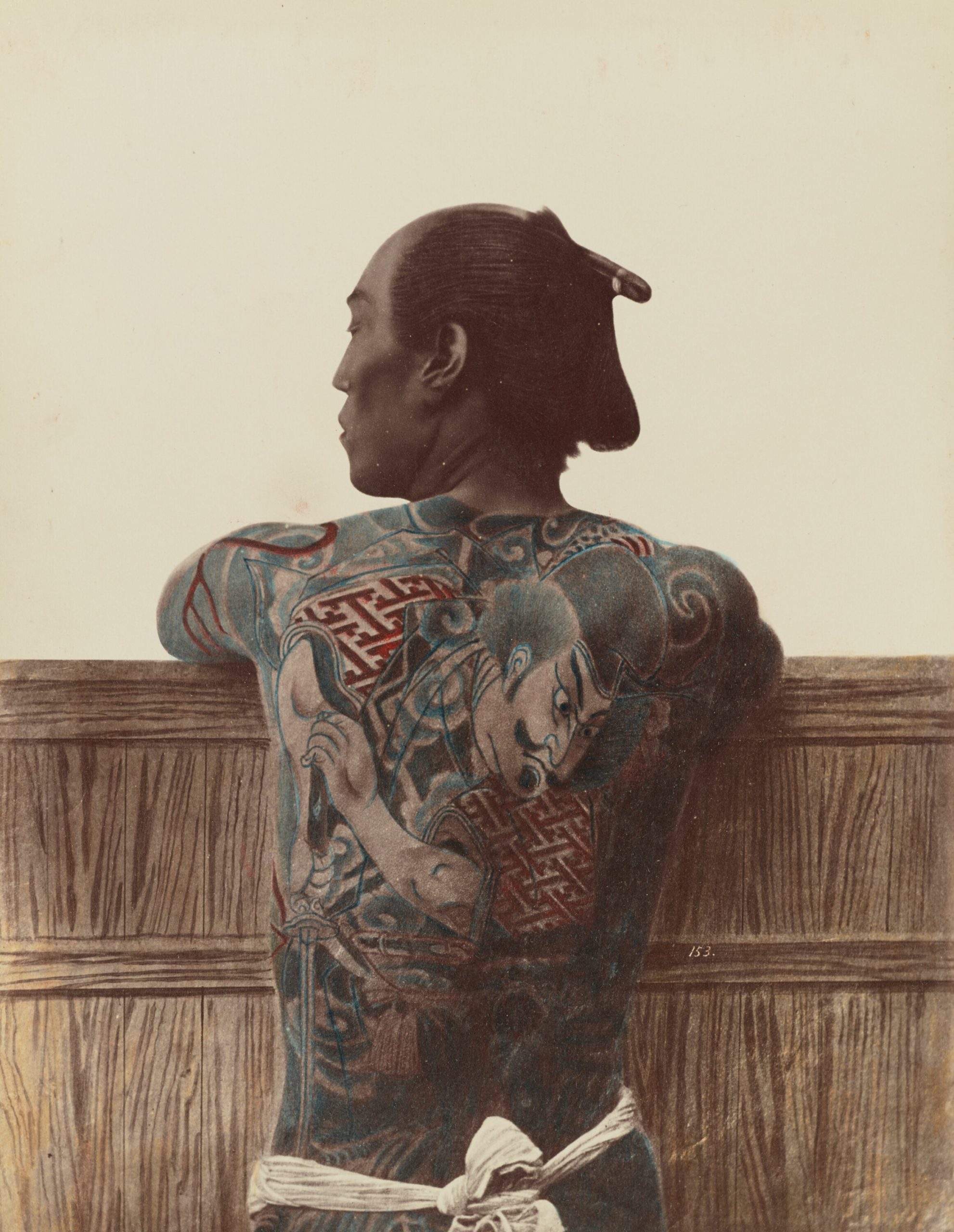

Portrait of a man with tattoo taken by Kuskabe Kimbei in the 1870s-1890s.
Instructor: Kelly McCormick (she/her)
Time: Term 1, Mon 11:00 am – 12:30 pm
Why did you choose this image to represent the course?
This class sees images and objects as the crystallization of large historical events. Each of the course’s lectures focuses on a single image or “object”—from early photographs, postcards, and the bullet train, to more loosely defined “objects” like tattoos, the bob haircut, and ramen —to trace how images and objects play an important role in defining and creating the modern world. Most importantly, as with the case of the tattoo, we will develop an understanding of how the meaning of a particular “thing” changes over time. For instance, we will address how Indigenous tattooing practices of the Ainu or Ryukyu people were outlawed by the Japanese government in the process of Japanese colonial modernity.
What are you most looking forward to about teaching in this course?
I am really looking forward to the connections that student make across different “objects” (from earthquakes to the atomic bomb) to explore new meanings of Japanese history. We will be taking class trips to the Museum of Vancouver and the UBC Asian Library where we will examine nineteenth century Japanese photographs made for the international tourist market and photobooks made in the 1950s for local audiences.
What can students expect from the course, in terms of workload and the types of readings?
HIST_V 237A History of the United States
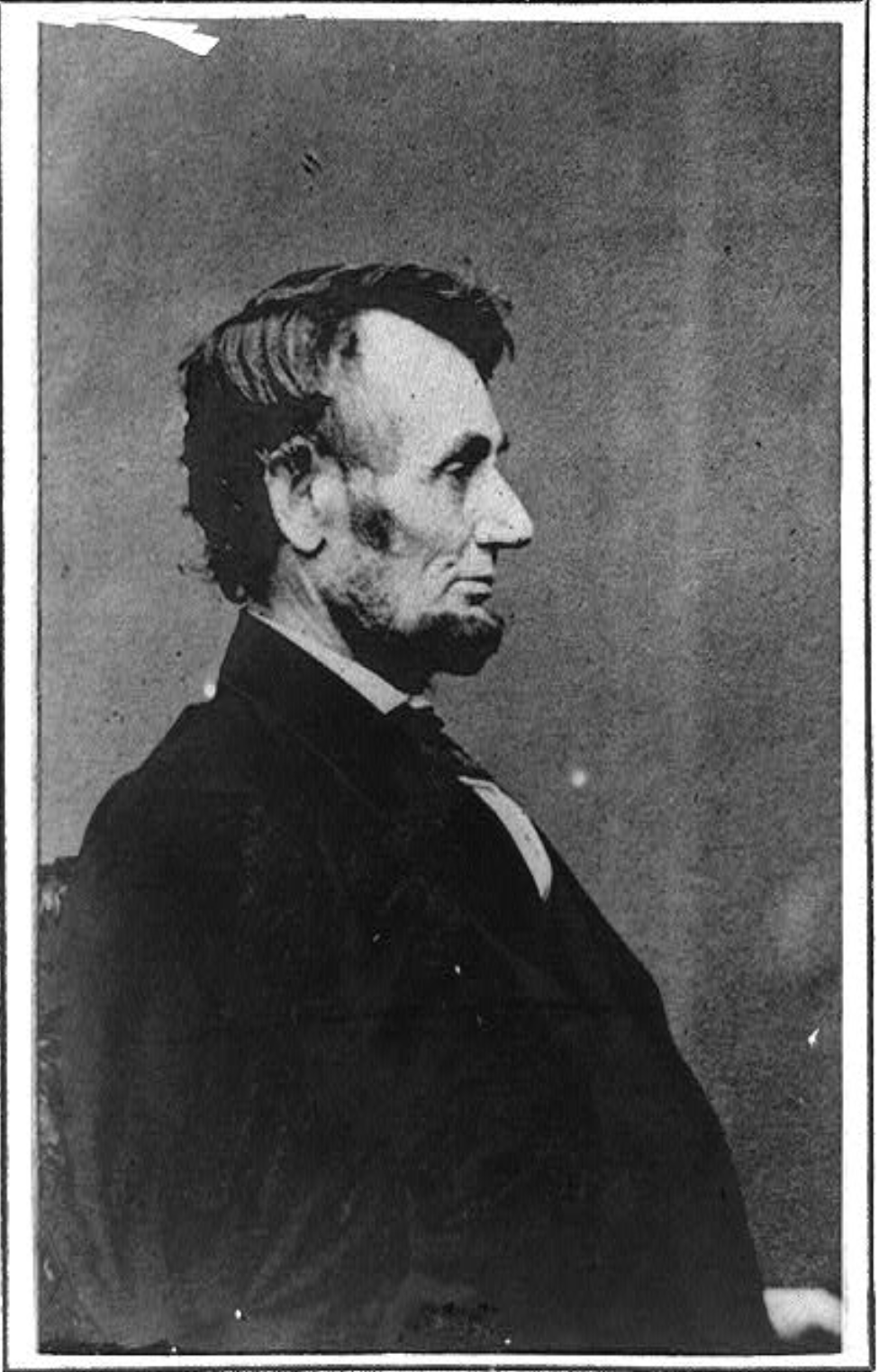

Portrait profile of President Abraham Lincoln, facing right and seated Photograph by Anthony Berger, 9 February 1864, Washington, D.C. Credit: Library of Congress, https://www.loc.gov/resource/cph.3a10739/.
Instructor: Leslie Paris (she/her)
Time: Term 1, Tue Thu 2:00 – 3:00 pm
Why did you choose this image to represent the course?
President Abraham Lincoln posed for this photograph in 1864, during the Civil War. The union had come undone less than a century after its founding. How secure was the American experiment, historically? How secure is it today?
What are you most looking forward to about teaching in this course?
I look forward to lecturing on such topics as colonial witchcraft trials, nineteenth-century reform movements, and the impact of modern technology. I like to teach the skills that students need to write strong research papers, such as finding and analyzing historical sources.
What can students expect from the course, in terms of workload and the types of readings?
HIST_V 260 Science and Society in the Contemporary World
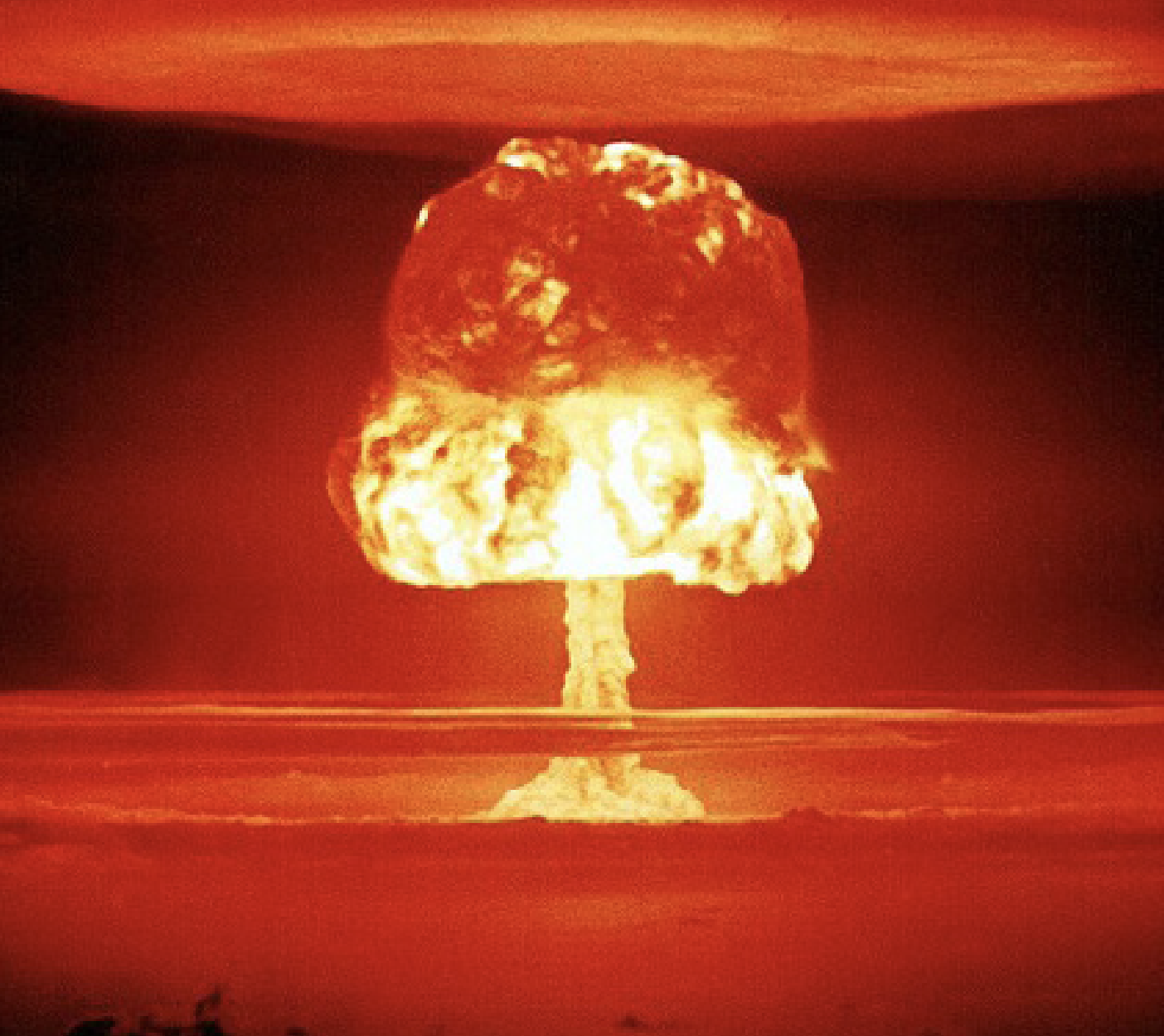

Detonation of an atomic bomb.
Instructor: Robert Brain (he/him)
Time: Term 1, Mon Wed 2:00 – 3:00 pm
Why did you choose this image to represent the course?
The course begins with the Manhattan Project and the atomic bomb, and the ways they changed both science and society.
What are you most looking forward to about teaching in this course?
I love teaching students about the recent history of some of the key science and technology issues of our time: nuclear weapons, eugenics and biotechnology, computing, internet and artificial intelligence, climate change. After lectures on the history (how we got to where we are now), we consider some of the philosophical issues related to these topics: ethical questions, political questions, and how we know what we know (or don’t). Students are usually excited about these discussions as they come to better understand their world and the issues that will shape their lives.
What can students expect from the course, in terms of workload and the types of readings?
HIST_V 101: Global History to 1500 CE


Bibi-Khanym Mosque, Samarkand, Uzbekistan; Image credit: Yumi Kim via Unsplash.
Instructor: Sara Ann Knutson (she/her)
Time: Term 1 & 2*, Mon Wed 10:00 – 11:00 am
*Please note, this is a 6-credit course that spans over Term 1 & Term 2.
Why did you choose this image to represent the course?
The “Silk Road” is imagined as a network of people, plants, animals, languages, religions, and landscapes that existed in the premodern world. In this course, we examine global connections like this in order to reflect on questions like, what was the world that was disrupted by oceanic contacts, ca. 1500?
What are you most looking forward to about teaching in this course?
I am excited to help students question what they think they know about the premodern world and the common assumption that ancient and premodern times were less “advanced” than our interconnected contemporary world. I also look forward to exploring what “global” means to students in their daily lives and experiences.
What can students expect from the course, in terms of workload and the types of readings?
This course introduces students to global history from ancient times to the end of the fifteenth century. Students will learn about the practice of doing History. Our goal is not to absorb random historical “facts” but to learn how to think historically and to strive to understand how people in the past understood their world. This will not be a writing-intensive course and no previous experience with History courses is expected or required.
HIST_V 102: World History from 1500 to the Twentieth Century
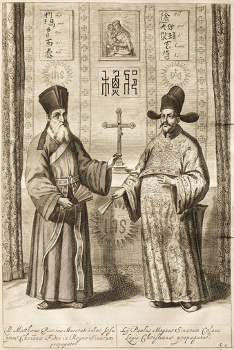

Matteo Ricci and Paolo Xu Guangqi depicted together in a 1688 Dutch translation of China Illustrata (1667) by the Jesuit writer Athanasius Kircher. Image via Wikipedia.
Instructor: Josh Timmermann (he/him)
Time: Term 1 & 2*, Mon Wed 3:00 – 4:00 pm
*Please note, this is a 6-credit course that spans over Term 1 & Term 2. There is also an online asynchronous version of this course, HIST_V102-002.
Why did you choose this image to represent the course?
This is an image of the Italian missionary and scholar Matteo Ricci and his most famous convert and collaborator, “Paolo” Xu Guangqi. It encapsulates well the complicated, contingent, often surprising interaction of disparate cultures across the early modern world. There’s a lot going on in this image, and it demands to be carefully “unpacked,” which is exactly what we will do in this course.
What are you most looking forward to about teaching in this course?
I am most looking forward to showing students the deeply and sometimes wonderfully strange (from our vantage point) the world(s) of the not-so-distant past, in particular, the “thought worlds” inhabited by people like Ricci and Xu. I’m excited to introduce students to the range of methods by which historians can, to some extent, come to better understand those seemingly strange, highly opaque worlds.
What can students expect from the course, in terms of workload and the types of readings?
Students will read a variety of historical primary sources, ranging from poetry and philosophy to political treatises and biographical writings. These texts will be complemented by pertinent recent studies by historians. We’ll also be watching some movies and considering the potential of film to represent and immerse us in the lived worlds of the past.
HIST_V 406: The Second World War
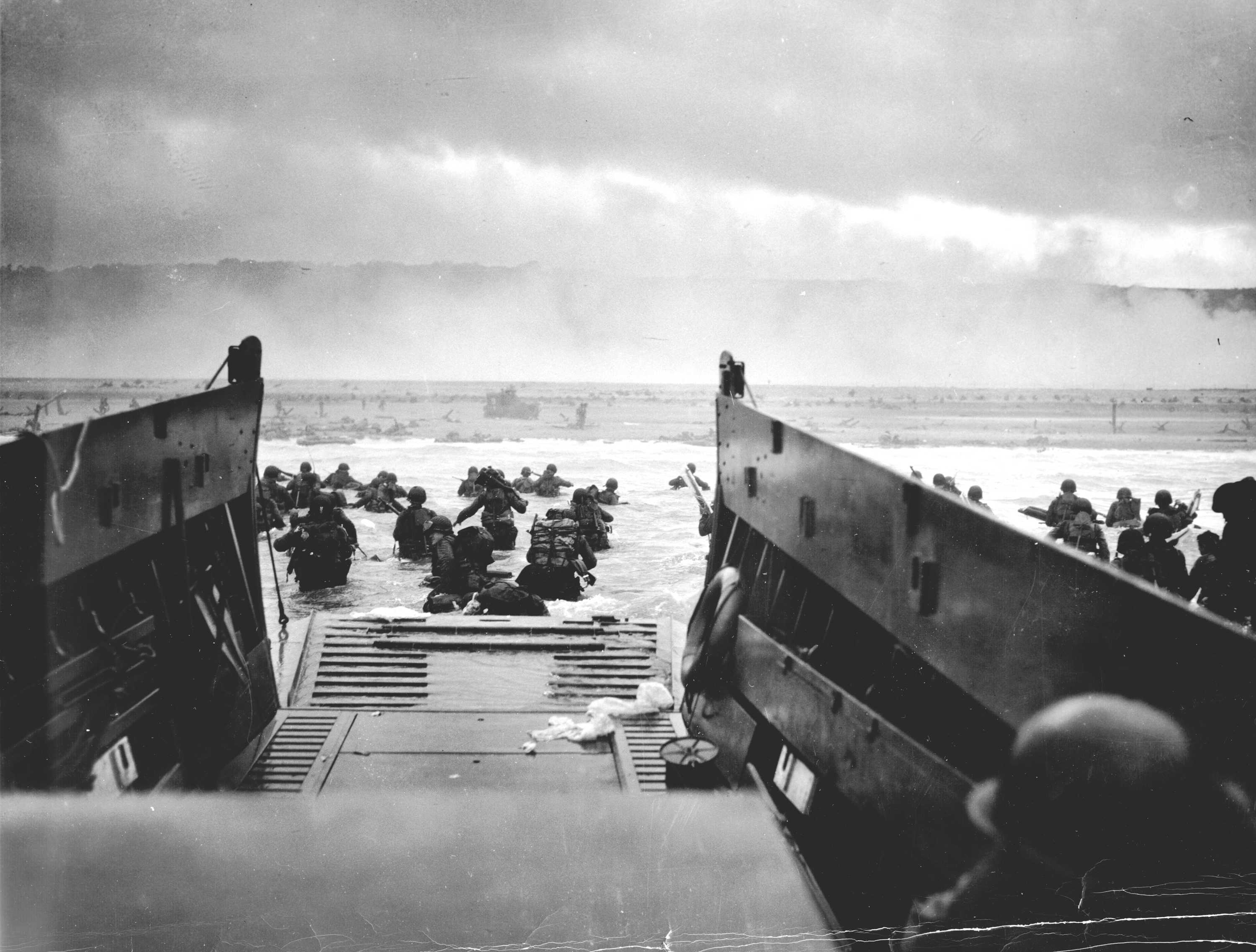

A landing craft deposits Allied soldiers on the shores of Normandy during D-Day, June 6 1944.
Instructor: David Borys (he/him)
Time: Term 1 , Wed 3:00 – 6:00 pm
Why did you choose this image to represent the course?
What are you most looking forward to about teaching in this course?
What can students expect from the course, in terms of workload and the types of readings?
HIST_V 336: Imperial and Colonial Archaeology and Museums
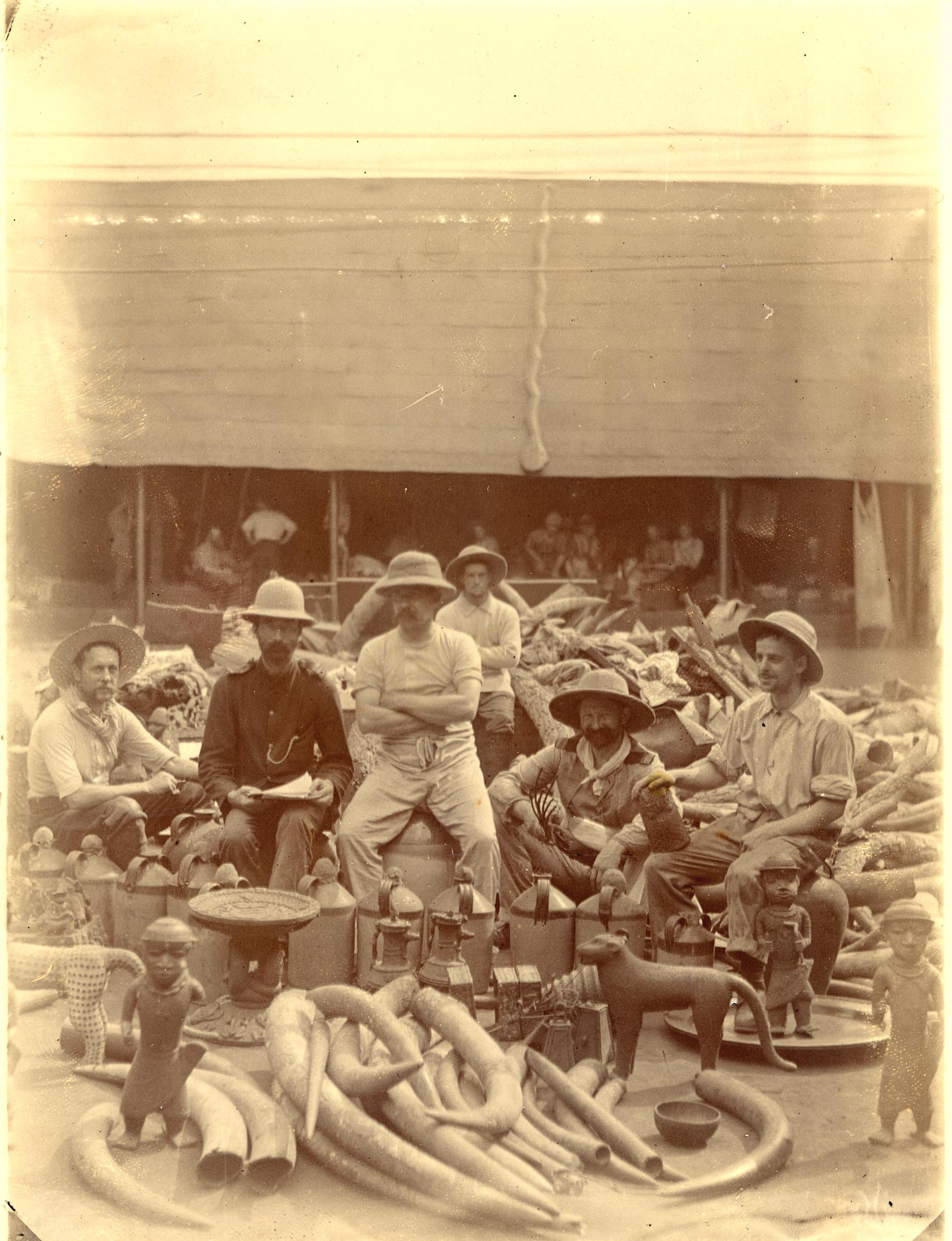

Photograph six members of the British Expedition following the raid on the Oba's palace in Benin City in 1897. They are surrounded by looted objects from the royal palace, shrines and compounds. Gelatin silver print. British Museum Af A79.13 © The Trustees of the British Museum. This image is available under a Creative Commons License for non-profit purposes: https://creativecommons.org/licenses/by-nc-sa/4.0/
Instructor: Bonnie Effros (she/her)
Time: Term 2, Tue Thu 9:30 – 11:00 am
Why did you choose this image to represent the course?
Although popular films have embraced the adventure rather than ponder the legacy of archaeological expeditions, this image exposes how imperial powers’ allegations of having “saved” world heritage from neglect or destruction was often a way of expanding political influence and disrupting the legal jurisdiction of target nations and coveted territories.
What are you most looking forward to about teaching in this course?
I am excited about the final project, which is a digital exhibition that allows students to explore topics that are meaningful to them related to the themes of the course. It builds on earlier assignments on how to write a label, review a museum exhibition, and create a short video about the process of putting together the final project.
What can students expect from the course, in terms of workload and the types of readings?
Students will have about 120 pages of reading per week. These readings offer background and methodology; the purpose is to read them for their arguments which demonstrate awareness of imperialism and colonialism as a vehicle for archaeological exploration and museum building. There are no exams in this course.
HIST_V 250: Latin American History


National Literacy Campaign, Cuba, 1960s.
Instructor: Benjamin Bryce (he/him)
Time: Term 2, Mon 3:30 – 5:00 pm
Why did you choose this image to represent the course?
What are you most looking forward to about teaching in this course?
I am looking forward to flipping the classroom. Students will learn through a series of hands-on activities and discussions of Latin American voices, introducing them to diverse perspectives as well as the methods of history.
What can students expect from the course, in terms of workload and the types of readings?
HIST_V 300: Vikings Then and Now


Viking-Age Woman Figurine, photo by Sara Ann Knutson.
Instructor: Sara Ann Knutson (she/her)
Time: Term 2, Wed 11:00 am – 12:30 pm
Why did you choose this image to represent the course?
This is one of my favourite objects from the Viking Age. It depicts a woman with a shield and sword and therefore challenges older ideas and assumptions about Viking-Age Scandinavia.
What are you most looking forward to about teaching in this course?
The first undergraduate course I ever taught was on Viking-Age history and archaeology. Since then, our knowledge of the Viking Age continues to grow in new and exciting ways. As an archaeologist and historian, I am really excited to examine with students just how global the Viking Age was and how a variety of disciplines can be used together to examine this past.What can students expect from the course, in terms of workload and the types of readings?
HIST_V 362: The Islamic Golden Age


The Spiral Minaret of the Great Mosque of Samarra; photo by Abdulmomen Laith Mahmoud (2016).
Instructor: Sara Ann Knutson (she/her)
Time: Term 2, Wed 3:00 – 4:30 pm
Why did you choose this image to represent the course?
The Great Mosque of Samarra was constructed during the Abbasid Caliphate and remains today as an enduring example of cultural heritage connected to this era.
What are you most looking forward to about teaching in this course?
This is one of my favourite courses to teach because we cover a wide range of topics related to a period and empire in Islamic history known as the Abbasid Caliphate. Our discussions will include food, politics, social dynamics, science, and literature, among other topics. Whether students are interested in this period because they culturally identify with the Middle East or they know very little about this time and place, this course offers something for everyone.What can students expect from the course, in terms of workload and the types of readings?
The course features weekly readings and podcasts. Students can expect to engage with a diverse range of sources from Abbasid-era people themselves as well as leading scholarship on the weekly thematic topics. For the final assignment, students can choose between working on a creative assignment or a ‘traditional’ academic paper.


